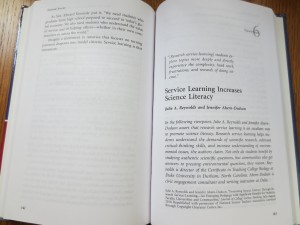Because they were spaced almost a full year apart, I really did not connect the dots when two Canadian universities announced that they were cancelling their “Big Deals” with John Wiley & Sons publisher. The Times Higher Education reported on the decision at the University of Montreal back in January 2014, while the announcement made by Brock University came only a few weeks ago. I would not have considered this a trend worth commenting on had it not been for conversations I had last week at the Fall CNI Membership meeting. During that meeting, two different deans of large university libraries told me, unbidden and in separate conversations, they they were also considering ending their deal with Wiley. I was struck by the coincidence, which caused me to remember these two announcements from Canada and to begin to ponder the situation.
Two different questions occurred to me when I thought about these four significant cancellations or potential cancellations, all directed at a single publisher. First, why was Wiley the focus of this dissatisfaction? Second, what is the next step?
As for what the complaints are about Wiley, the answer is pretty much what it always is — money. The THE article and the Brock University report both tell us that exchange rates have made the annual “higher than the inflation rate” price increases for these packages even harder to bear than usual. They also point to another problem. Pricing is based on the large number of titles included in these package deals, but many of those titles are not very useful. The Brock post notes that the Wiley package has a significantly higher cost per use than does their Elsevier package, which presumably reflects the fact that many of the titles the University is paying for in the package simply do not get used. The same reality is probably behind the fact noted by THE that Montreal would subscribe to less than 25% of the titles that had been included in the package it was cancelling. It would be interesting to find out, a year on, how much those other titles have been missed.
In my conversations with the two library deans, much the same thing was said about Wiley — demanding a large price increase, being inflexible in negotiation, and selling “a lot of junk that I don’t need” in the package. Libraries are beginning to discover that they do not need to put up with those tactics. Publishers often tell us that they are publishing so many more articles, which justifies their price increases, and they tell us how selective their flagship journals are. But when we look at these big deals, it is clear that selectivity is not an across-the-board approach; many articles that are not very useful just slide down the hierarchy to get published in journals whose main purpose is to pad out a “big” deal.
To me the more important question is “what now?” Unfortunately, many times when a library makes this kind of decision there is actually little money saved, since the funds simply go into re-subscribing to a smaller, selected list of titles from the same publisher. But presumably some of these cancellations result in dollars saved. And when they don’t, I propose that libraries ought to reexamine their approach. When you have cancelled a dross-laden package, think twice before reinvesting all of that money in as many individual subscriptions from the same publisher as possible; make a careful decision about where the division between useful titles and unnecessary ones really lies. Because here is the thing — money that can be saved and reinvested in open access projects will give us a higher return on our investment, because those projects will provide greater access.
It seems clear that, over time, libraries will need to move more and more of their spending away from the consumption side of scholarly production and do much more to support the creation and dissemination of knowledge directly. Commercial publishers hope to capture those dollars as well, but one of the real benefits of supporting open access can and should be more freedom from businesses addicted to 30% profits. I would like to challenge libraries to consider, when they have to cancel, using the money to support non-profit or lower profit open access projects. Work with a society to provide subvention for a scholarly journal to become OA. Work with your university press to support OA monographs. Finally, even if not compelled by immediate budget realities, think about making some strategic cancellations in order to take these kinds of steps. We know that open access is our future, and it is vital that we take control of that future before others take it from us.
I don’t know if Wiley is the worst offender amongst the large commercial publishers, or whether there is a real trend toward cancelling Wiley packages. But I know the future of scholarship lies elsewhere than with these large legacy corporations. The process of weaning ourselves from them will be slow and drawn-out. But especially when the cancellations are going to happen anyway, we should have the idea of using the funds to advance the transition to open access foremost in our minds.
For a similar, but likely better informed, perspective on the idea of cutting subscriptions to support open access, please read Cameron Neylon’s post on “Letting it go — Cancelling subscriptions, funding transitions,”which ties the idea in his title to the discussion going on in the Netherlands about Elsevier’s big deal.




